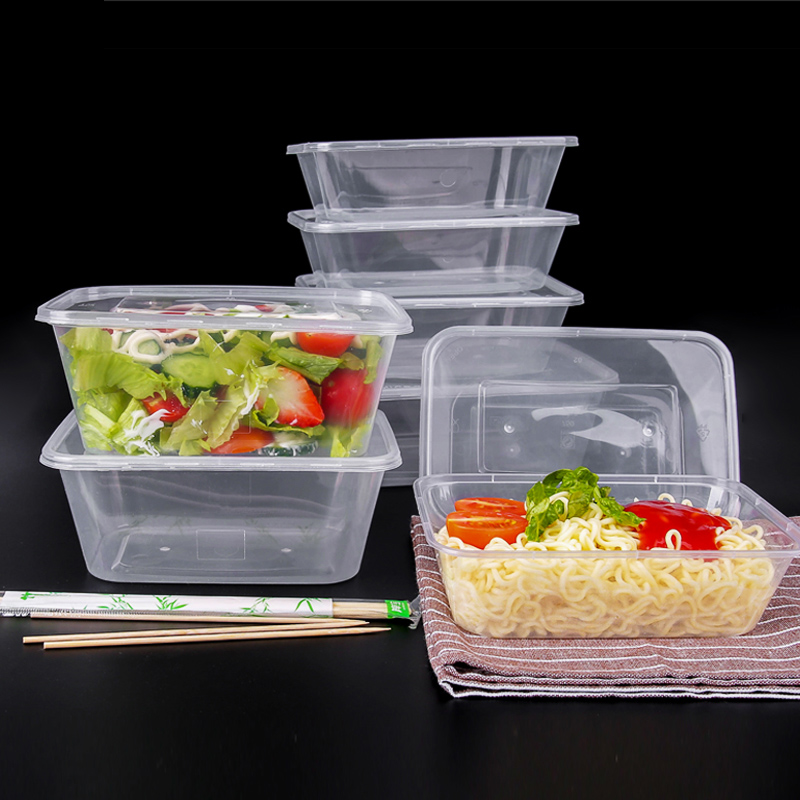
Introduction
Plastic bowls have become an integral part of our daily lives, finding applications in various settings from households to commercial food services. This paper aims to explore the multiple reasons behind the widespread choice of plastic bowls, considering factors such as cost – effectiveness, durability, versatility, and convenience. Additionally, potential environmental and health concerns associated with plastic bowls will be examined, along with strategies to mitigate these issues.
Cost – Effectiveness
One of the primary reasons for the popularity of plastic bowls is their cost – effectiveness. Plastic is a relatively inexpensive material to produce compared to alternatives like ceramic, glass, or metal. The raw materials for plastic production, such as petroleum – based polymers, are abundant and widely available. This availability, combined with efficient manufacturing processes, results in plastic bowls being more affordable for consumers.
In a household context, families on a budget can purchase multiple plastic bowls at a lower cost compared to investing in a set of bowls made from more expensive materials. For commercial food service providers, such as restaurants, cafes, and fast – food chains, the use of plastic bowls can significantly reduce costs. Buying large quantities of plastic bowls in bulk is often more cost – efficient, allowing businesses to allocate their resources to other aspects of their operations, such as food quality and customer service.
Durability
Plastic bowls are known for their durability, which makes them a practical choice for many users. They are resistant to breakage, chipping, and cracking, unlike ceramic and glass bowls. This property makes plastic bowls suitable for use in households with children or in environments where there is a higher risk of accidental drops or impacts.
For example, in daycare centers or schools, plastic bowls are preferred as they can withstand the rough handling by young children. In outdoor activities like picnics or camping, plastic bowls are a popular choice because they are less likely to shatter if dropped on hard surfaces. Their durability also means that they have a longer lifespan, reducing the need for frequent replacements, which is both convenient for the user and cost – effective in the long run.
Versatility
Plastic bowls offer a high degree of versatility in terms of their design, size, and functionality. They come in a wide range of shapes and sizes, from small individual – serving bowls to large mixing bowls. This variety allows them to be used for different purposes, such as serving soups, salads, fruits, or for mixing ingredients in cooking.
Some plastic bowls are designed with specific features, such as lids for easy storage and transportation. These lidded plastic bowls are ideal for packing leftovers or taking food to work, school, or on the go. Additionally, plastic bowls can be made with different levels of flexibility, which can be beneficial in certain applications. For instance, flexible plastic bowls are useful for kneading dough as they can be easily manipulated without cracking.
Convenience
The convenience factor associated with plastic bowls cannot be overstated. They are lightweight, which makes them easy to handle, especially for those with limited strength or dexterity. This lightweight nature also makes plastic bowls convenient for transportation. Whether it’s carrying a bowl of food to a friend’s house or using them in a mobile food service, the ease of carrying plastic bowls is a significant advantage.
Plastic bowls are also easy to clean. In most cases, they can be quickly washed by hand with soap and water or placed in a dishwasher. This is in contrast to some other materials, such as certain types of metal bowls that may require more careful cleaning to prevent rusting. Their quick – drying property further adds to their convenience, allowing for rapid reuse.
Environmental and Health Considerations
Despite their many advantages, plastic bowls are not without their drawbacks. From an environmental perspective, plastic waste has become a global concern. Plastic bowls, like other plastic products, can take hundreds of years to decompose in landfills. When they end up in natural habitats, such as oceans or rivers, they can cause harm to wildlife.
However, efforts are being made to address this issue. There is an increasing trend towards using recycled plastics in the production of plastic bowls, which helps to reduce the demand for virgin plastic materials. Additionally, promoting recycling programs for plastic bowls can significantly decrease the amount of plastic waste in the environment.
In terms of health, there have been concerns about the potential leaching of chemicals from plastic bowls, especially when they are exposed to high temperatures or acidic foods. Some studies have suggested that certain plastic additives, such as bisphenol A (BPA), may have adverse health effects. To mitigate this risk, many manufacturers now produce BPA – free plastic bowls. Consumers can also take precautions by avoiding using plastic bowls for heating food in the microwave or storing hot, acidic foods for extended periods.
Conclusion
Plastic bowls are chosen for a multitude of reasons, including their cost – effectiveness, durability, versatility, and convenience. These factors have made them a staple in both household and commercial settings. However, it is essential to be aware of the environmental and health implications associated with plastic bowls. By using recycled plastic products, promoting recycling, and making informed choices about the types of plastic bowls we use, we can continue to enjoy the benefits of plastic bowls while minimizing their negative impacts. As technology and consumer awareness continue to evolve, it is likely that we will see even more sustainable and health – friendly plastic bowl options in the future, further enhancing their desirability as a choice for various applications.


